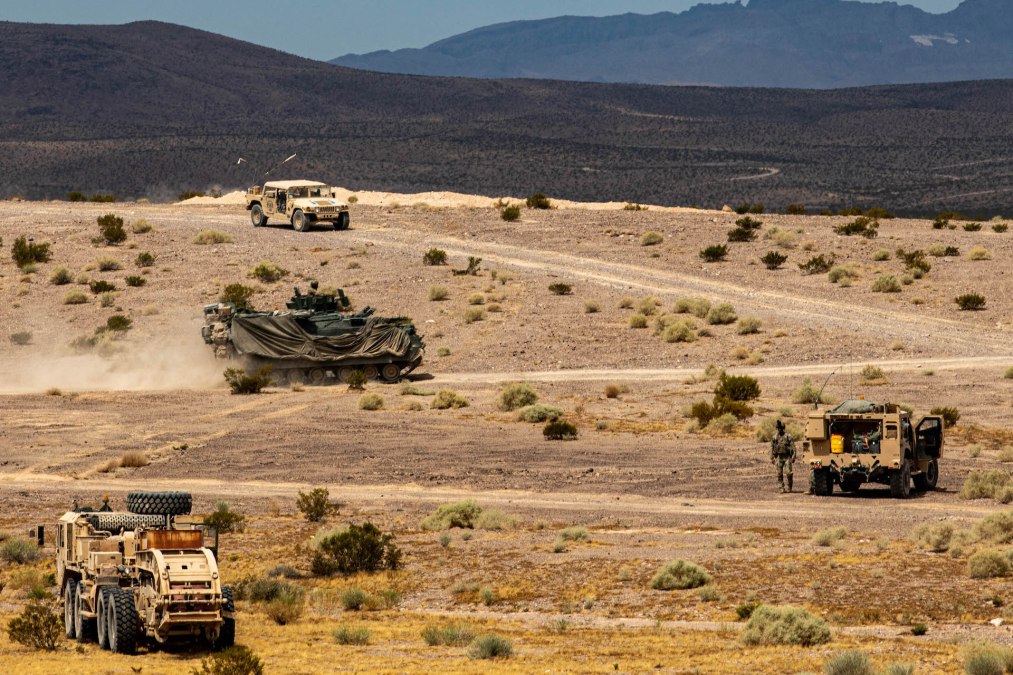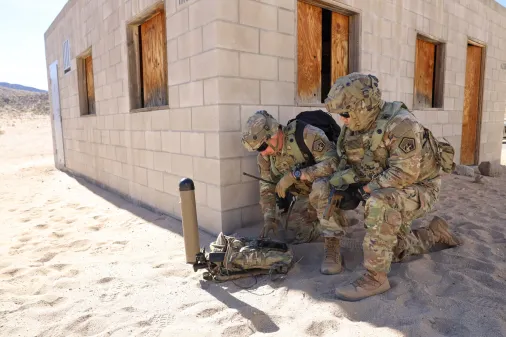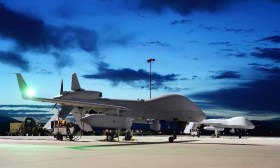Army testing how existing equipment can be used differently as it seeks to ‘transform-in-contact’

The Army is experimenting with different applications of its current systems to devise new concepts as a way to outpace emerging threats on the battlefield.
“Much of what we’re doing right now is just using what we have better and then experimenting within our units here to evolve with what we have today at the pace with which we’re observing change in the world,” Maj. Gen. Christopher Norrie, commander of 3rd Infantry Division, told reporters Friday during a media call. “Many of the innovations … were just using systems that we have, but in a much more efficient and commensurate way.”
The division’s 1st Armored Brigade recently tested new concepts and applications of equipment during a rotation at the National Training Center at Fort Irwin, California. Combat training center rotations are the most realistic combat scenarios the Army can create for units to train and to validate units.
The brigade sought to use drones, counter-drone technology and electromagnetic decoys in new and novel ways, some based off recent observations overseas.
“We’ve been transforming both in how we approach training and then how we’re innovating in the realm of UAS, counter-UAS and then electromagnetic to make us more lethal and more survivable on the battlefield. This approach was informed by how we trained and what we observed in Europe. We are observing the world and then we’re transforming in contact,” Norrie said.
These experimentation efforts are part of a larger Army initiative, dubbed transforming-in-contact, where the service plans to use deployments and troop rotations to test new equipment — mainly commercial off-the-shelf gear — that could allow units to be more responsive on a dynamic battlefield, especially with unmanned aerial systems, counter-UAS and electronic warfare.
In fact, many of the applications of capabilities and technologies utilized by 1st Brigade, 3rd Infantry Division were lessons taken from 2nd Brigade, 101st Airborne Division’s recent rotation at the Joint Readiness Training Center at Fort Johnson, Louisiana.
“We’re in close coordination with folks like a 2nd Brigade, 101st on how they executed their JRTC rotation at the same time we did our NTC. A lot of the things that we looked at rhymed with the things that they did down at JRTC,” Col. Jim Armstrong, commander of 1st Armored Brigade, 3rd ID, said. “We also had small UAS teams at the battalion level and had to man some of those counter-UAS teams. We were just with 2nd Brigade, 101st last week at the maneuver warfighting conference and shared a lot of those lessons across the Amy.”
The unit was able to communicate more effectively and more dispersed than in the past, enabled by diversity of transport and command-and-control systems. A key tenet of future warfighting is the need to move quickly and in a disaggregated manner to avoid being targeted by the enemy.
Soldiers were able to create a rear command post with intelligence, targeting and logistics personnel in a support area, allowing the main command post to be smaller, more mobile and more agile farther forward in the battlespace.
“We put some of our battalion command and control at different places on the battlefield. We kept our main big servers for our command post at Fort Stewart [in Georgia] that enabled the division to conduct cyber defense from there, and we took small servers the size of a briefcase forward to NTC, which allowed us to organize our command post differently,” Armstrong said. “That is a different organizing construct that I’m talking about, which is things that we have, that we just made a little different.”
Based on direct observations from Europe, the unit also utilized deception techniques to hide the real location of command posts in the digital environment from the opposing force at NTC. A critical lesson from Russia’s conflict in Ukraine — including the 2014 incursion and the larger invasion that began in 2022 — is that command posts’ electronic signatures must either be smaller or hidden in the larger digital noise because they can be discovered and targeted.
“They also utilized the deception command post to effectively hide command and control, as a needle within a needle stack or a field of needles out there. Those efforts were extremely effective at masking our own formations, while drawing the enemy out so that they could then be targeted here as well. All of that was informed by experiences in Europe. And those communications were essential to enabling and allowing that to happen,” Norrie said.
To start, 1st Armored Brigade looked at where brigades put their tactical operations centers in previous NTC rotations. It then recorded its own emissions in the spectrum and copied it to place on the battlefield as a decoy to the enemy.
“We knew that if it was successful, it would receive some kind of contact from the enemy. And we poised ourselves to be able to, as Gen. Norrie described, the enemy jammed and shot indirect fire at that decoy command post — and that causes them to unmask their assets and gives us an opportunity to not only destroy those specific assets, but then it preserves our real command post some more time before we have to make that next jump, which is why we got more mobile, because we know we can’t stay in one place long,” Armstrong said. “It requires you to be able to see yourself, to see the enemy and then to be able to act in the electromagnetic spectrum and team that with some physical domain things that when the enemy cues their different intelligence sources, that it looks like a real thing from multiple domains.”
While there are official program-of-record capabilities being developed that are designed to allow a unit to understand its digital footprint and then obfuscate or deceive the enemy where it is, 1st Armored Brigade used solider-developed emitters and existing equipment.
“The bulk of that equipment was us just taking our currently assigned equipment and repurposing it for deception. We took our legacy, if you will, satellite trailer and put it down there and turned it on a cueing schedule that matched what our command post was. We replicated FM and [Joint Battle Command Platform] signals. We put cell phones and WiFi pucks down there,” Armstrong said.
Other systems were soldier developed, similar to what 2nd Brigade, 101st did at JRTC strapping commercially available raspberry pi’s to drones. Those tools developed with 1st Armored Brigade were put through their paces with the 82nd Airborne Division recently during a rotation at JRTC, serving as testbeds for troops before bringing them to NTC.






